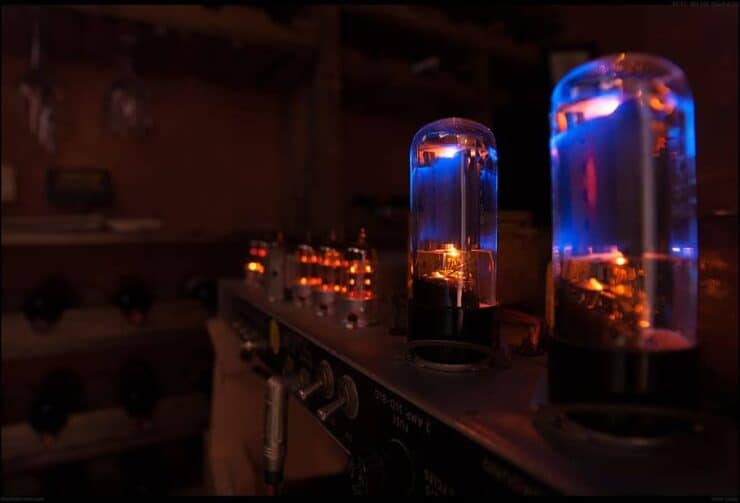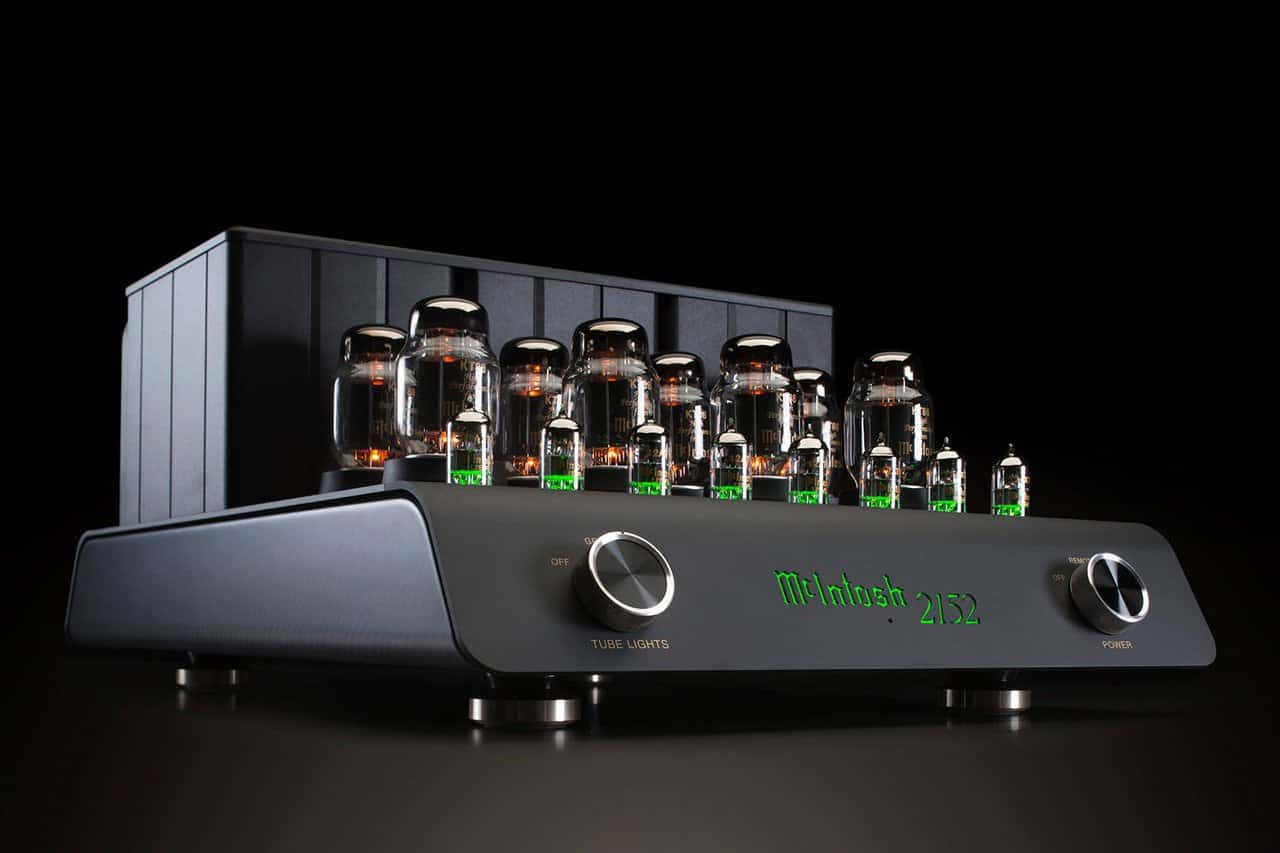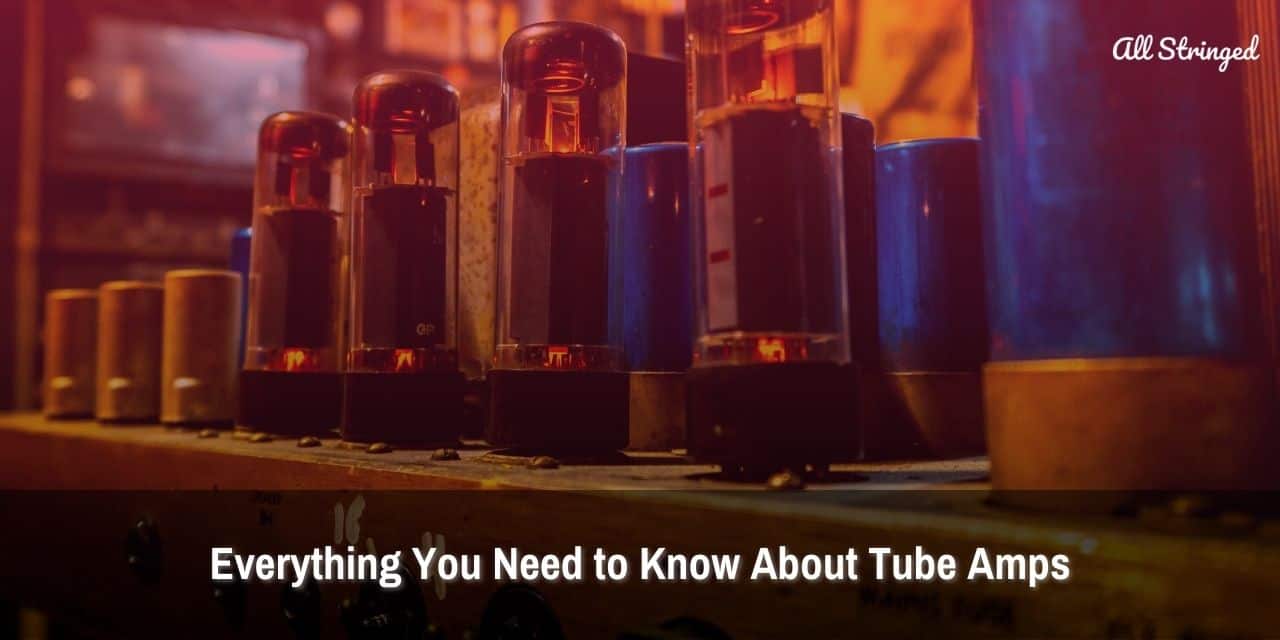Guitar players, are you looking to learn more about tube amps and how to keep them in top condition? Look no further! This article is here to provide everything you need to know about tube amps and how to maintain them. Get ready to dive deep into the world of tube amps and learn all the tips and tricks you have to keep them working perfectly. So, let’s get started!
What is a tube amp?
A tube amp is essentially an amplifier that uses vacuum tubes or valves for amplifying the electric signals that are produced by a musical instrument. For electric guitars, these signals get produced by pickups, typically of the electromagnetic variety, and they’ll pass through the power tubes and preamp tubes of the amp before exiting the amp through a speaker.

A tube is a small glass cylinder that features several different components within a vacuum. Its primary purpose is to increase the amplitude of a signal. With the tube amp, a guitar’s signal will be sent through tubes at a rate determined by the controls on the device like volume and gain.
When electric current flows through the tube, heat gets generated by a filament. This causes the cathode to release negatively charged electrons. Surrounding the cathode will be a plate known as the anode. This carries a positive charge and as you might know, opposites attract. This way, the electrons will start flowing from the cathode to the anode. Located between the two will be the grid, which is connected through a cable to the guitar’s pickups. The signal from the pickups will control the flow of electrons while also causing them to reach the anode, amplifying the signal in the process.
The more signal that gets sent through a tube, the more electrons will be released, and in turn, attracted. This will result in harmonic distortion, which is what you’ll hear coming from the speaker, and it’ll be a massive part of what is so great about tube amps.
>>> Click here to read more about Guitar Amps <<<
Different types of tubes in a tube amp
A tube amp is characterized by the types of power amp tubes that are used. Vacuum tubes weren’t originally meant for musical amplifiers. You can find them in all sorts of 20th century electronic devices, but certain models produce more musical sounds compared to others. Here are the different types of tubes in a tube amp –
#1. 6L6
6L6 tubes are famously known as “high headroom” tubes. This means they’re able to get pretty loud before they start to distort. 6L6 tubes can be found in Class A amps, but they’re more commonly seen in Class AB amps. Further, they’re associated closely with Fender amps like the Hot Rod, the Deluxe, and the Tremolux. When a guitarist talks about an “American” tube sound, they’re usually referring to Fender amps having a 6L6. Meanwhile, Mesa/Boogie amps make use of a variation of the Fender circuitry, and they’re strongly associated with the 6L6.
#2. 6V6
A close cousin to the 6L6, this one is another tube that sounds very “American”. A 6V6 distorts or breaks up at lower volumes compared to a 6L6, which makes them quite popular among lead guitarists who have to play single notes high on the neck. On the flip side, they produce less precise tones at high volumes when comparing them to 6L6. While they are great for blues, country, and classic rock, they wouldn’t be the best option for heavy metal riffing.
#3. EL34
If the 6L6 is considered to be the classic “American” power tube, the EL34 is seen as the classic “British” tube. This is because of the strong association with British amp companies Orange and Marshall. However, it isn’t just British players like Jimmy Page who get their iconic sound, the EL34s. Musicians like Slash and Angus Young are also synonymous with Marshall amps and the EL34s responsible for driving them.
#4. EL84
Here’s another British tube that is equally popular in amps from the United States, Japan, and China. The EL84 is known for driving the Vox AC30 and is a popular choice for Class A amps. They’ll distort readily once the volume is pushed and can create creamy saturation quickly, albeit one that could be slightly treble-focused.
#5. KT66
Sounding very similar to the 6L6 with a bit more mid-range, KT66 power tubes offer a fair amount of headroom and clarity. Many mid-60s Marshall Plexis used to feature KT66 power tubes.
#6. KT88
Quite similar to the 6550, the KT88 features a great amount of clean headroom alongside strong bass and treble frequencies. Unlike the EL34, the KT88 doesn’t bark in the mids.
Many amps, especially the ones made by brands like Bogner and Mesa/Boogie, are capable of generating distraction from the preamp circuitry. However, there’s far less variation in preamp tubes across various models of amps. The 12AX7 is the standard preamp tube, but its function will vary depending on the amp’s circuitry.

Advantages of tube amps
Tube amps have many notable advantages that musicians love and allow amps to continue passing the test of time and be used in different genres. Some of the primary advantages are –
#1. A warm, organic tone
Tube amps are widely considered as being able to produce warmer and more natural sounds compared to solid-state amps. This is the case because the tone will be created by pushing the amp’s volume. This is where the term “overdrive” actually comes from.
When you turn up the volume on tube amps, it’ll increase the gain, distort the signal, and create saturation. This will give the sound more depth and character. This waveform of tube amps can also be described as being rounder, which tends to contribute to a warmer sound, something for which tube amps are popular.
The quality of distortion and all the pleasant harmonics produced are usually cited as the primary reasons why many people prefer tube amps.
#2. More dynamics and expressiveness
Aside from the lovely tones that tube amps provide, they’re also quite responsive to the changes in the guitar playing. This is what makes tube amps so expressive.
As the natural compression that tube amps have, if you’re looking to clean up the sound, you need to try doing so by playing lightly and more delicately. Meanwhile, if you have to add some great, you can do this easily by adding a more aggressive pick attack.
Sure, you’ll be able to do this with high-quality modeling and solid-state amps. Sometimes, they can also have a reputation for being more sterile or harsh than a tube or valve amp.
#3. Higher quality components
Generally, tube amps are made using higher-quality components compared to solid-state amps. This is among the primary reason why they’re more expensive. They are more working components inside of them than solid states, too.
As they feature more high-quality parts, tube amps tend to last longer. This is why many musicians who invest in a good tube amp can use it for years or sometimes even decades. They’re even able to hold their value well over time.
How to choose a tube amp?
#1. Format of tube amps
First, you’ll have to consider the format of tube amps. Should you be going for a head and a cab or a combo amp? Combos are quite nice as they are entirely self-contained units. There won’t be any need to mess with external cabinets or need extra cables.
Some might say that they sound even better. This can be something to do with how the combos resonate, with the extra space versus a comparable cab. If there’s any difference, it’ll be marginal and subjective. On the downside, a 1×12” combo will likely be more difficult to lug around in comparison to a head and 1×12” speaker cabinet.
With the rise in the incredible popularity of lunchbox headers like the Victory VX The Kraken and the Orange Rocker 15, tube amps have become much more portable than before. Not to mention the wide variety of choices available on the market. Amp heads will be ideal for musicians who record at home and make use of attenuator and cabinet impulse responses.
If you’re looking to choose a different speaker, you can simply swap cabs. For live performances, you can go for an off-brand lightweight speaker like the Barefaced Reformer 112. It’ll be much louder than a regular 1×12” and your back will definitely thank you later on.
But what if you want to use it in a studio? Most studies prefer going down the route of using amp heads. They’ll take up less space, so you can stack them easily. Further, they can be routed to the cabs in a live room when needed.
#2. What about the power tubes
If you’re a musician, you might have noticed the discussion surrounding power tubes. It is one of the first things that people ask about tube amps. This conversation is generally centered around something like “should I buy 6L6 or EL34 tubes? However, you must remember there are other tube types too such as 6V6, KT88, and EL84.
However, there’s no simple answer for “which power tubes to go for”. The tone will entirely depend on the tubes and the circuit of the amp. The differences can be heard clearly when you’re driving the power section.
To answer this question, you’ll require two identical amps with different power tubes. Then, you should be using an A/B box to test. This can be a lot of work, and it can overcomplicate the decision too much.
#3. Is there a particular genre you’ll play more
A quick and easy way of narrowing down the field will be to step back and think of the music you’ll be playing. For instance, if you want to use a tube amp specifically for playing metal or any sub-genre, there are a few amps that you can go for.
- EVH 5150
- Laney Iron Heart
- PRS Archon
- Mesa Boogie Mark V
- Victory Kraken (VX or Super Kraken)
- Marshall JCM800
At a less extreme end of the spectrum, there are some tube amps that are wonderful for playing rock music –
- Orange Dual Terror
- Orange Rocker 15 or Brent Hinds Terror
- Victory RK50
- Victory Sherriff 22
- Marshall JVM
- Friedman Dirty Shirley
If you want to use a tube amp for playing jazz or blues, here are a few options that you should consider –
- Fender Blues Deluxe
- Victory V40
- Fender Deluxe Reverb
- Mesa Boogie Lonestar
- Vox AC15 (or AC30)
If you’re looking to play a broad spectrum of music, for example, anything from metal to blues or pop, there’s still hope. This might complicate things slightly, but there are a few options on the market capable of covering a lot of tonal ground.
For instance, the Egnater Tweaker 88 amp head is an amazing tonal chameleon. It’ll offer two channels that can be added for offering clean or gain tones. There’s a multitude of switches that offer extreme tonal flexibility. EQ can be geared between US, British, and AC styles.
You can also find an FX loop and foot-switchable boosts for every channel. You can set them to clean or gain boosts. Further, you can even pick one of these amps up for around $900 (new) or $400 (pre-owned).
Meanwhile, Mesa Boogie’s Mark V and Rectro-Verb amps both offer an incredible set of features and have great build quality. Both of them have independent tube-driven reverb for every channel, FX loop, switchable wattage, and more. If you’re looking for a vintage vibe, you must check out the Recto-Verb. Meanwhile, you should go for the Mark V if you want a modern tone. Both of them come in different power configurations, with head/combo versions being available.
>>> Click here to read our review about the Top 15 Best Tube Amps <<<
#4. Pedal platform or versatile
Many players go down the route of featuring a simple single-channel amp and use it as a pedal platform. When using a pedal platform, you’re essentially relying on boost, fuzz, and overdrive pedals rather than switching to a lead channel. If this works for you, then this is the route to take.
For example, you can use fuzz and overdrive pedals and pair them with a Fender Strat. If you write metal, pedals might not be able to take the place of a tube-driven overdrive. However, the good old Tube Screamer will work well to tighten up the tone.
Not all amps can take pedals well. For instance, it might not be the best fit to use an Egnater Tweaker 88 head for pedals. However, it is quite flexible.
Say that you have a Mesa Boogie Mark V:25, it can take pedals beautifully. Its tonal range is capable of covering everything from blues to heavy metal and more. This will give you everything that you need in a single amp. You should consider this when you’re looking for a tube amp to purchase.
#5. How much wattage is required
The wattage of a tube amp might not accurately describe how loud it’ll be. Moreover, some manufacturers also round the wattage up or down. It will give you a rough idea of how loud it can get.
A tube amp will sound its best when cranked, but it’ll lose its edge if you crank it too much. You shouldn’t crank your amp too high, or it can result in a bad tone. Further, it will break your gain control as well.
Here is what you should think about this –
Get an amp that has twice the wattage that you need. This way, you’ll have enough headroom. If you’re playing largely clean notes, you may require a bit more to make sure that you have enough headroom before your clean tones begin breaking up.
For home use, most tube amps will probably be too loud. However, it’ll be useful to have a tube amp that you could use at home and for live use if needed.
You can go for an attenuator like a UA Ox if you require a head amp. It will allow you to crank the amp without having your neighbors in a fit of rage. Another option will be to use an amp having switchable wattage. For instance, most Orange and Victory lunchbox heads come with switchable wattage. It’ll be a similar case for most Mesa Boogie amps.
#6. Extra features
There can be many other features you’ll need in a tube amp. Here are some other options that you should consider –
- FX loop
- Built-in reverb
- Clean/gain boost
- MIDI send + return
How to maintain tube amps?
#1. Use the amp after warming up
First, you should try and let your amp warm up for a while before use. If your amp comes with a separate power and standby switch, you must turn on the power for at least 2 minutes before you switch on the standby.
#2. Replace the whole set of tubes
If you’re replacing output tubes, you must replace the whole set, preferably with the same type of tubes. Avoid mixing tube types. If your amp has EL34 power tubes, you must replace them with EL34s. If it has 6L6 or 5881 types, you need to use those only. You must ensure that the pins on the base of the tubes are lining up exactly and fitting the tube base on the amp perfectly.
#3. Cool down your amp after use
Remember to always allow your tube amp to cool down 15–30 minutes after use.
#4. Use quality signal and speaker leads
You should always make use of high-quality signals and speaker leads and remember to check them regularly. Many guitar and bass cabinets come with ¼-inch connectors. A ¼-inch connector shorts out briefly when it is plugged and unplugged. Therefore, you must always connect your cable to the cabinet before connecting it to the amp. This way, you will never be putting a short on the output of the amp. The same principle will work for signal lines. You should plug the cable into the source (guitar) first and plug the other end into the amp.
#5. Avoid storing the amp in humid conditions
You should never store your tube amp in damp or humid conditions. Greenhouses, garden sheds, or garages might not be the best idea. These conditions are not that helpful for speakers.
#6. Make sure your amp has the correct impedance
Impedance and loading are important in many tube amp designs. Moreover, you should ensure that the amp has the correct impedance set to match the cabinets that are being used. Further, make sure that you aren’t loading the amp with too low an impedance by connecting multiple speakers in parallel.
FAQs
What is a tube amp?
A tube amp is an amplifier that uses vacuum tubes to amplify sound. Vacuum tubes are electronic devices that use heated filaments or gas-filled tubes to control the flow of electricity. Tube amps are known for their warm, rich sound, and can produce a wide range of tones from clean to distorted.
What are the benefits of using a tube amp?
Tube amps are known for their warm and responsive sound, as well as their ability to produce a wide range of tones. They also provide greater dynamic range and volume control than other types of amps. Tube amps can also be used as preamps when recording, adding warmth and character to recordings.
What are some of the drawbacks of using a tube amp?
Tube amps can be expensive and require regular maintenance. They can also be heavy and require frequent tube replacement. Tube amps also require careful handling, as they are sensitive to temperature changes and can be damaged if dropped or mishandled.



